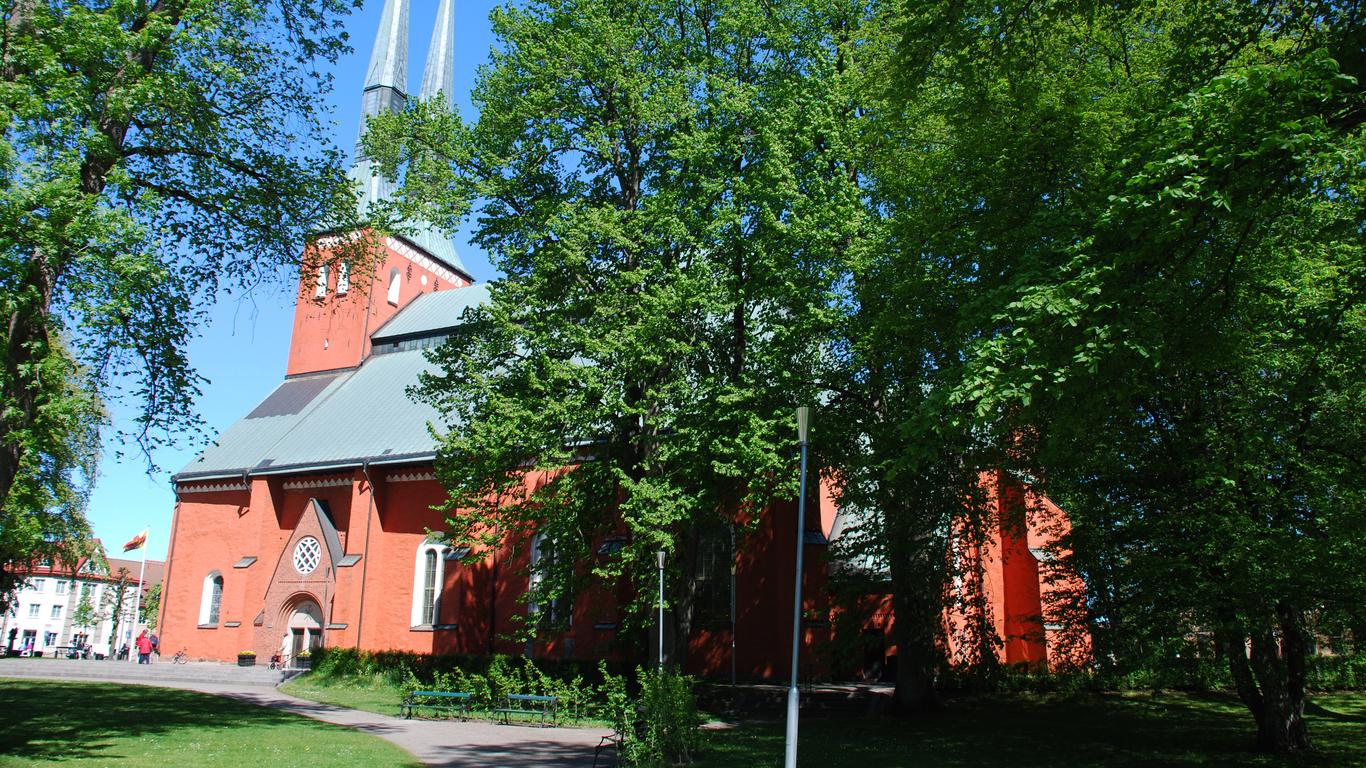Serving as the cultural and administrative centre of Kronoberg County, Växjö is surrounded by lakes in Sweden’s south. It’s home to fascinating museums that explore its cultural heritage, glass art and 19th-century migration history, as well as a stunning cathedral that was reconstructed by the Swedish architect Kurt von Schmalensee in the 1950s.
Things to do in Vaxjo
You can delve into the past at the Smålands Museum, which is surrounded by historic buildings that are typical of the region. Wander between the small windmill, rural dwellings and water mill before exploring the museum’s collection of everyday artefacts and tools. The museum tells the story of Småland from the Ice Age through to the Viking period and modern times.
Occupying the same building is the Swedish Glass Museum, which is one of the largest of its kind in Europe. Its exhibits date from 1580 to the present day and represent Swedish glassworks as well as pieces from around 35 different countries. Historical tools used in the production and processing of glass are also displayed.
Several significant pieces of glass art are also showcased within the Växjö Cathedral, which was originally established in the 1160s on the site of an ancient marketplace. Its red exterior is dominated by two soaring spires and a copper roof, while the interior features traces of medieval murals. Take note of the Gothic Revival chandeliers and the glass doors, as well as the glass altarpiece created by Bertil Vallien.
Getting around Vaxjo
Växjö is around 1.5 hours’ drive from Jönköping and 2.5 hours from Malmö. Malmö is just under three hours away and has flights to destinations across Europe. Trains connect from major cities across Sweden and Copenhagen to the Växjö railway station and the town is compact enough to explore on foot.





